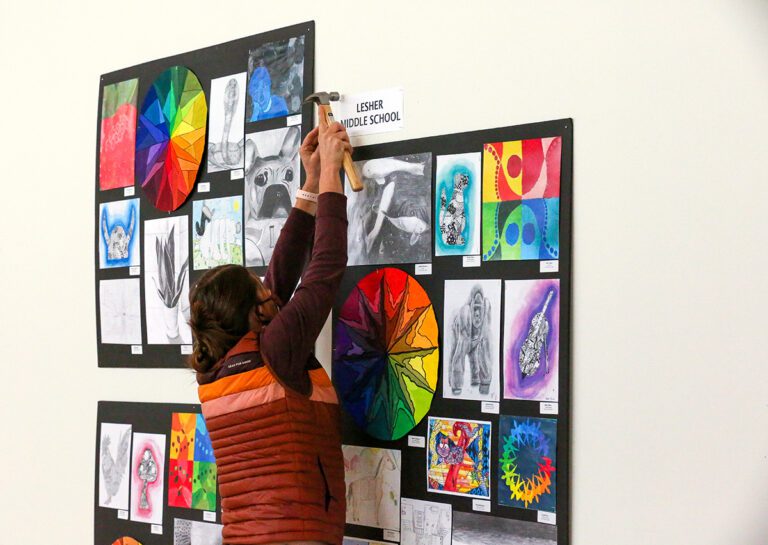It’s early May, and you’re ready to present an awesome and challenging lesson to your students. However, the classroom teacher drops them off saying, “So you’re making something for them to take home for Mother’s Day today, right?” Um . . . No. If this–or something like it–has happened to you, you know it can be both frustrating and insulting.
My art room is not a Hallmark Store.

My classroom does not exist to make cutesy trinkets for holiday presents. I have a curriculum! That’s not to say my students have never made things they want to take home and gift to their family or friends. But the products students make in my classroom are not meant to be souvenirs; the motivation and goals behind the work we do is so much more rich and complex.
Deciding how to spend classroom time should originate from learning goals, essential questions derived from your curriculum, and the state and national standards–not from what Dad would like to have on his desk at work.
So, how do you handle this conundrum?
When I started in my district, teachers, students, and parents alike expected gifts to be made in art class for every possible occasion. My initial reaction was shock. Was this really the expectation for art class? Was that all they thought I should be doing? I needed to make a plan to address the issue. I needed a way to preserve the integrity of my art curriculum and incorporate the “gifting” expectations of parents, teachers, and students.
Here is how I appease children and parents without surrendering my entire school year to making presents.
First, for each holiday, I devise a simple craft project that can be done at home. I either print out directions or link them to my school web page. Often, I find videos on YouTube that demonstrate a project step by step.
Secondly, I let interested students know they can make these gifts at home or during Early Morning Art. Two days a week, I host an open art room for 40 minutes before school. I put out the basic supplies needed to do whatever upcoming “gift” projects are on the calendar. Interested students arrive and get to work. I provide one completed example and they follow the directions. I am simply a facilitator. Since I was already offering this as “extra help” it doesn’t require any additional time commitment on my part.

For students who cannot make it to Early Morning Art, I make a single accommodation. I leave the supplies out and allow them to “bag” them after school so they may complete the project at home. This way everyone has access and no one has an excuse.
Finally, I explain this procedure at Back to School night and parent conferences. I make sure to emphasize that class time is spent addressing state and district mandated curriculum standards and practices. After a few years, it has become fairly well accepted and understood.

Of course, there will always be a teacher or parent who will ask why I don’t make the toilet paper roll angels with their fourth grader. To them, I say, “Well, your student learned how to draw a winter landscape in perspective instead. You should have them show you! It’s a remarkable skill combining mathematics and art. The time we have is devoted to learning what is in our curriculum. If you’d like to make a toilet paper angel at home with them, I’m sure they’d love that.”
If parents and teachers regularly see what extraordinary things students are creating they will eventually stop expecting you to do work that is beneath you and your students.
Stand your ground, be firm, and always remember the curriculum is your guide. You are there to encourage artistic habits and develop skills. It might take a while, but eventually, everyone will follow your lead. After all, you are the art teacher, not a Hallmark store.
How do you handle the art class gift expectation?
Are you opposed to doing “gift” projects?
Magazine articles and podcasts are opinions of professional education contributors and do not necessarily represent the position of the Art of Education University (AOEU) or its academic offerings. Contributors use terms in the way they are most often talked about in the scope of their educational experiences.





